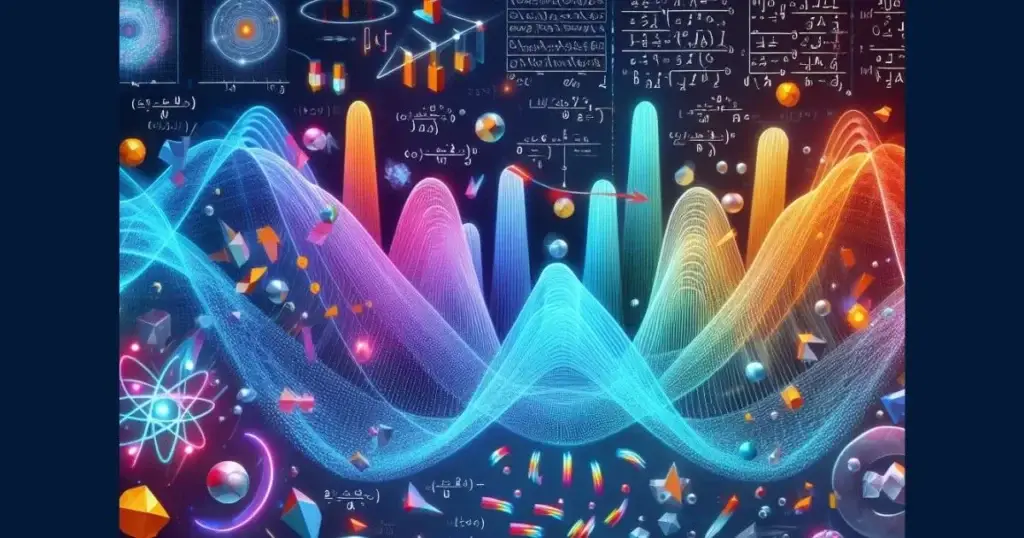Quantum fluctuations:
They are the universe’s heartbeat, a symphony of energy emerging from nothing. These tiny variations have a tremendous impact on the structure of reality in the field of quantum physics. An intricate web of secrets remains to be solved as we investigate these oscillations and go deeper into the fascinating realm of quantum physics.
An Overview of Quantum Wavelengths
A basic fact underlies quantum fluctuations: even in the absence of substance, the quantum realm remains alive and active. These oscillations offer an element of unpredictability that goes against traditional understanding, stemming from Heisenberg’s uncertainty principle. Quantum fluctuations are real, observable occurrences with significant implications rather than merely theoretical ideas.
Foundations in Theory
Understanding the fundamental ideas of quantum mechanics is necessary in order to appreciate quantum fluctuations. Fundamentally, quantum physics upends our traditional ideas of determinism and ushers in a probabilistic universe in which particles are in a state of superposition until they are measured. The quantum vacuum, which is sometimes mistaken for empty space, is really teeming with virtual particles that are constantly changing and emerging into existence.
Duality of Wave and Particle
Wave-particle duality is a fundamental idea in the study of quantum fluctuations. Particles behave like both waves and particles in the quantum world, making it difficult to distinguish between them and other conventional categories. This duality is seen in quantum fluctuations, in which particles borrow energy from the vacuum for a brief period of time before returning it in a transient dance of creation and destruction.

Principle of Heisenberg Uncertainty
The intrinsic fuzziness of the quantum environment is captured by Werner Heisenberg’s uncertainty principle. It states that we can determine a particle’s momentum less precisely the more exactly we know its location, and vice versa. The ephemeral character of quantum fluctuations results from this uncertainty extending to energy fluctuations.
Theory of Quantum Fields
The mathematical foundation for understanding quantum phenomena, such as fluctuations, is provided by quantum field theory. Particles are seen as excitations of underlying fields that are present in both space and time. In this picture, quantum fluctuations appear as variations in these fields, like waves on a pond’s surface.
Empirical Proof
Quantum fluctuations are widely supported by experiment, as seen by the Lamb shift and the Casimir phenomenon. These events, which were before thought to be theoretical oddities, now provide verifiable proof of the dynamic nature of the quantum universe. Technology could advance greatly if these oscillations could be captured and controlled.
Uses for Quantum Computing
Our growing knowledge of quantum fluctuations is one of the driving forces behind the impending revolution in quantum computing. Researchers want to take use of the enormous computing capacity that exists within quantum systems by encoding information in quantum bits, or qubits. Maintaining qubit coherence, which is necessary for quantum processing, is largely dependent on quantum fluctuations.

Consequences for Cosmology
Quantum fluctuations have an impact not only on particle physics but also on the structure of the universe. These oscillations generated the density perturbations that sparked the creation of cosmic structures in the early cosmos. As a cosmic fossil, their mark on the cosmic microwave background radiation preserves a moment in the early history of the universe.
Neural Nets and Quantum Wave Motion
Not even at the furthest reaches of space can erase the permanent impact of quantum fluctuations. Black holes gradually lose mass over time as a result of the Hawking radiation produced by these oscillations around them. A intriguing new area of theoretical physics that offers fascinating insights into the structure of spacetime is the interplay between quantum fluctuations and gravity.
Technological Innovations
Rapid advancements in quantum technology might lead to a wide range of improvements, such as extremely secure communication networks and processor speeds that are tenfold higher. The main source of these developments is the use of quantum fluctuations, which offer unparalleled precision and processing power. As researchers stretch the boundaries of quantum engineering, the potential applications rise.
Barriers and Limitations
Although quantum fluctuations have immense promise, several challenges still need to be addressed. Decoherence and noise are examples of technological barriers that might prevent quantum power from being successfully used. Furthermore, ethical concerns regarding potential misuses of quantum technology emphasise the need for responsible innovation and oversight.
Moral Considerations to Make
As quantum technologies develop, ethical questions about privacy, security, and their impact on society come to light. Since traditional encryption systems can be broken by quantum computing, concerns have been raised regarding data security and privacy. Furthermore, because quantum technologies are unevenly distributed, unequal access to and control over them may exacerbate already-existing inequities.

Outreach Instruction
A key component of encouraging public engagement and understanding of complex scientific topics is good communication. In the context of quantum physics and its applications, initiatives to increase scientific literacy are crucial. By promoting dialogue and investigation, we allow individuals to think about the important implications of quantum fluctuations.
future possibilities
There is a bright future for quantum fluctuations, one that might revolutionise computers and even unlock the deepest mysteries of the universe. As interdisciplinary research continues to flourish, collaborations between physicists, engineers, and ethicists will foster innovation and responsible growth. By means of navigation
This is for those who read the blog, I am so gratefull for you guys that you have spent some amount of your time for reading my blog, Thank you guys so much.
Here check out my YouTube



